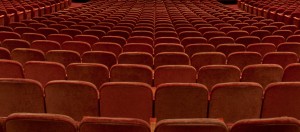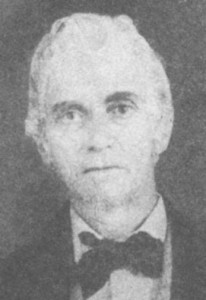You know the drill. Take your seat, don’t move, sit quietly, then applaud enthusiastically only at the appropriate times. Is this prescribed concert behavior the best way to engage audiences? Susan Key—special projects director for the San Francisco Symphony—examines this question.
 There has been a lot of discussion lately in arts circles about the importance of listening to our audiences. For me, the point was underscored by an audience question during our March 17 Forum in San Francisco:
There has been a lot of discussion lately in arts circles about the importance of listening to our audiences. For me, the point was underscored by an audience question during our March 17 Forum in San Francisco:
Sitting in the audience can be a very passive experience. I mean, my head is spinning. I have lots of thoughts going through it. But I’m not supposed to move… the expectation is that we sit. We’re well behaved. …but we’re not supposed to do anything. And I wonder whether on occasion there could be a little bit more—like in rock concerts [when] people get up and dance.
Her question brings up an issue that I think orchestras ignore at their peril: the distance between the multi-textured human experience embedded in the works on our concerts and the human behavior we prescribe for their consumption. (more…)




 E/C/D-sharp/C-sharp. From that taut little four-note cell, Aaron Copland spun out the material, at once dense and spacious, imploded and expansive, of his 1930 Piano Variations. Cunningly orchestrated by the composer 27 years later, the Orchestral Variations got the San Francisco Symphony’s 2012 American Mavericks festival opener off to a bracing start on March 8 at Davies Symphony Hall. It also got me to thinking about the marvel of creativity, which can feed on so little to generate so much, like some tiny, tremendously efficient micro-organism.
E/C/D-sharp/C-sharp. From that taut little four-note cell, Aaron Copland spun out the material, at once dense and spacious, imploded and expansive, of his 1930 Piano Variations. Cunningly orchestrated by the composer 27 years later, the Orchestral Variations got the San Francisco Symphony’s 2012 American Mavericks festival opener off to a bracing start on March 8 at Davies Symphony Hall. It also got me to thinking about the marvel of creativity, which can feed on so little to generate so much, like some tiny, tremendously efficient micro-organism.  I grew up playing the clarinet. My father was my first teacher. He had played it during the 1930s and ’40s, when Benny Goodman and Artie Shaw were the pop culture stars of their day. By the time I got to college the electric guitar and heavily amplified rock music had replaced big band swing, and the clarinet was a ludicrously old-fashioned instrument. Paul McCartney used it in a song about retired people to set the tone for “When I’m Sixty-Four.” Grace Slick held an old metal clarinet in her lap for the cover of the Jefferson Airplane’s Surrealistic Pillow. By then it had become little more than a tchotchke. But there was no clarinet on any of her songs, and none I remember on any of the other great albums from that era.
I grew up playing the clarinet. My father was my first teacher. He had played it during the 1930s and ’40s, when Benny Goodman and Artie Shaw were the pop culture stars of their day. By the time I got to college the electric guitar and heavily amplified rock music had replaced big band swing, and the clarinet was a ludicrously old-fashioned instrument. Paul McCartney used it in a song about retired people to set the tone for “When I’m Sixty-Four.” Grace Slick held an old metal clarinet in her lap for the cover of the Jefferson Airplane’s Surrealistic Pillow. By then it had become little more than a tchotchke. But there was no clarinet on any of her songs, and none I remember on any of the other great albums from that era.